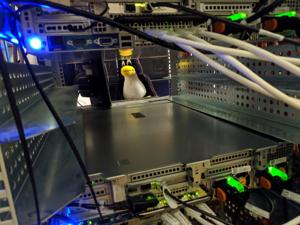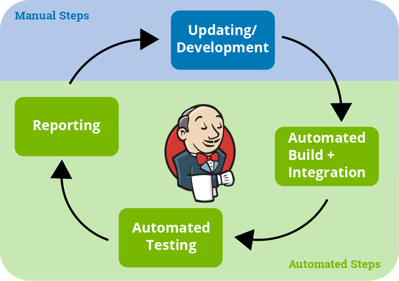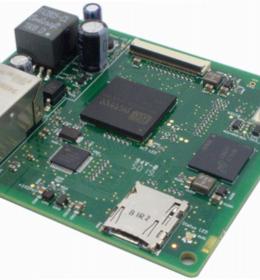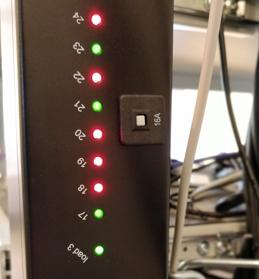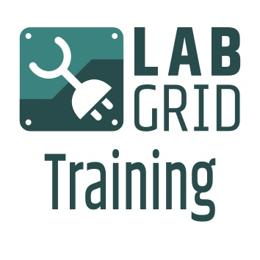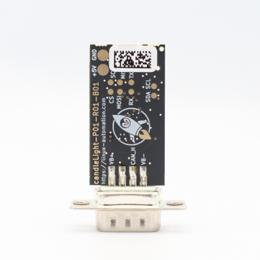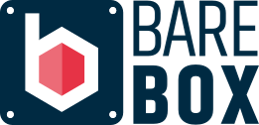Showcase: Continuous Testing
About 70,000 patches go into the Linux kernel every year, and many of them are bug fixes. The same applies to most other open source projects that are part of a modern Linux system. In order to benefit from the work in the community, the sensible strategy is to constantly update to the latest software version and keep the system up to date. Of course, with this amount of changes, new bugs can be added or incompatibilities can arise.
How can we support you?
By using Continuous Testing (CT) on real hardware, we are able to detect and fix occurring problems at an early stage. Our development projects essentially consist of two phases:
Initial Product Development
Many projects start with an initial development phase: In this phase we support you in commissioning your hardware, as well as building a Board Support Package (BSP), which is exactly tailored to your hardware. In this phase we develop for example missing drivers, add missing functions to software components or optimize the boot time of your device. In this phase software components are usually constantly updated to the latest versions. At the same time we offer to develop tests for your hardware and your BSP. These tests check the core functions of the system during development. This phase usually ends with the release of your product.
Long Term Maintenance
In addition, we offer you a permanent maintenance of your BSP: We regularly (e.g. several times a year) update your system and ensure with the tests that the functions are still given.
The subsequent maintenance provides you with significant advantages: If a software component should cause an error in your product or a security gap should occur, you will always have an up-to-date system at your disposal. This enables you to have short release cycles. At the same time, the changes from update to update are smaller, so that the actual effort for maintenance is lower.
Please do not hesitate to contact us: In combination with your product knowledge, we will come up with a development and maintenance concept for your operating system components that is tailored to your requirements.
Real World Example
In the following example, a customer relies on Verified Boot for its product. A chain of cryptographic operations ensures that only an operating system signed by the manufacturer can be run on a device. Each component (e.g. the boot loader) checks whether the next software component to be loaded (e.g. the Linux kernel) has a valid signature. Only if this is the case, the respective next component is executed.
The Verified Boot chain, from the configuration of the ROM code of the processor, over the boot loader, the Linux kernel up to the user space, were integrated into the BSP and are still being maintained by Pengutronix.
Test Case
To ensure that the verification of both the FIT image (including Linux kernel and device tree) and the dm verity protected file system work, they are tested. To do this, the FIT image is modified and an attempt is made to boot the system. In a different test, the file being executed as the init process in the dm-verity-protected file system is modified. Reading and executing this file is expected to fail, since the dm-verity hash tree is corrupt. In both scenarios, the boot attempt fails, thus Verified Boot works as expected.
During this test, various functions of the barebox boot loader are tested as a side effect: Images are copied between partitions, file systems are mounted and modified and the triggering of the watchdog is tested.
Error Case
During a maintenance update of the BSP, the boot loader has now been updated and the previously discussed test cases failed. The good news: Verified Boot still worked: The modified system was not executed.
But: The test revealed two bugs in barebox: One bug occurred when copying to POSIX device-files (Fix by Sascha Hauer). The other bug concerns the watchdog (Fix by Ahmad Fatoum). It is expected to reset the system after the Verified Boot chain was corrupted.
Both errors were uncovered by the test suite and the appropriate fixes were integrated into the BSP before the new BSP version was delivered to the customer.
Back to technical showcasesFurther Readings
Showcase: Embedded off-the-shelf
A firmware upgrade is due. A newly implemented feature needs to be rolled out, a security issue patched or new hardware support added. The software, while capable, is complex. Pengutronix' strategy to handle this complexity is working on a version- controlled Board Support Package (BSP) with continuous updates and tests on the latest mainline Linux kernel.
Showcase: Remote Working
Project work with our customers includes the handling of hardware prototypes. Since work is generally done in parallel, on many project for many customers, there is a constant flood of hardware prototypes accumulating on the desks of our developers. These accumulations of loose boards can become a problem. This is especially the case when a number of people work on a prototype. Another common annoyance occurs when a project has not been worked on for a period of time, as this might involve moving the hardware from one desk (or storage location) to another and setting it up again. Right now, in a situation where working from home is more common and relevant than ever, this has become even more of an issue. The distances between desks and storage locations of our developers are now measured in kilometers, rather than meters.
You can buy RAUC and labgrid sponsor packages now
RAUC and labgrid are open source software projects started at Pengutronix, that are quite successful in their respective niche. Starting today you can buy sponsorship packages for both projects in the Linux Automation GmbH web shop, to support their maintenance and development.Talks, Workshops, Time at the Beach - Embedded Recipes 2025
I was part of a small delegation of Pengutronixians at the Embedded Recipes conference this year in Nice, France. We had a great time there, so let's take a look back at the great talks we have seen, the labgrid workshop we held and our time in Nice in general.
Labgrid Hands-On Training at Embedded Recipes 2025
We are happy to announce that we are hosting a one-day version of our hands-on labgrid training at the Embedded Recipes in Nice, France. The workshop takes place on day three of the Embedded Recipes (16.05.2025) and is part of the workshop track. The workshop is free of charge, but registration is required.
Pengutronix bei der Embedded Testing 2025
Unser Spin-Off Linux Automation ist in diesem Jahr Aussteller auf der Embedded Testing und ist dort sowohl mit einem Stand als auch mit einem Vortrag dabei. Für Pengutronix als Dienstleister für Embedded-Geräte in verschiedenen Industriebereichen ist Testing selbstverständlich. Dies kann in der Form von Tests in den jeweiligen Upstream-Projekten oder in der Form von Integrationstests eines vollständigen Embedded-Linux-Systems auf der Kunden-Hardware geschehen.
labgrid is going on a live tour!
labgrid makes it possible to remote-control embedded linux devices and to implement integration tests of a complete embedded Linux system on real hardware. The Pengutronix developers and other companies have been using labgrid as a centerpiece of their embedded software development infrastructure to great success for quite some time now.
Yes we CAN... add new features
Have you ever experienced an otherwise fine product that is missing just the one feature you need for your application?
DSA in Barebox
The v2022.05.0 Release of barebox introduced initial support for the Distributed Switch Architecture (DSA) Framework. DSA is originally a subsystem from the Linux Kernel, which exposes the individual ports of a network switch IC as virtual network interfaces.
First Steps using the candleLight
So you went and got yourself one of our fancy rocket-penguin branded CandleLight dongles or, being the die hard hacker you are, went and soldered one up in your toaster oven labeled "not food safe". What's next then? How do you use this thing? Let's answer these question by grabbing a Raspberry Pi and exploring some of the possibilities.


